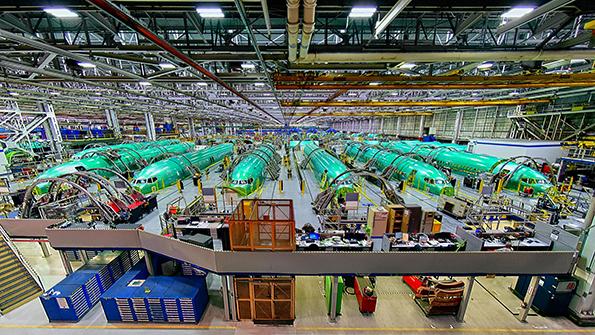Opinion: When A Bountiful Orderbook Is Not Healthy

This is a cautionary tale from a little over a decade ago.
I was called to take a new assignment and cut costs for the company where I was working. That assignment was to negotiate the supplier claims arising from the start of a new commercial widebody program so we could sell the facility and the program. We, along with our supplier base, had structured firm pricing based on parametric estimates derived prior to the engineering on what was a technologically challenging program in development. As the engineering matured, claims were coming in at 2-5 times what had been calculated to decide the original price.
I was called into a room filled with consultants who were smarter, better educated and, truth be told, better looking than me. As they concluded their presentation, their principal told me this was “a great opportunity because there are already 894 of these planes sold, so suppliers will fall in line in order to stay on the program.”
My response was: “The opportunity is the problem because the customer sold 894 of these at a price that we cannot make the structure for, nor can our suppliers—but we all have nowhere to go with these higher costs.”
To my everlasting regret, I turned out to be right. The entire supplier base turned over. Some of these contracts wound up in costly litigation. My company got out from under it, but many were not so lucky.
This tale is relevant because the discussion around the long-term prospects for the aerospace supply base hinges on the following assumption: The “healthy orderbook” for commercial aircraft will be good for the suppliers.
Unfortunately, those airplanes were all sold with a cost structure that will not be in place for the foreseeable future. The forecast production rates that were used to price the parts going into those sold airliners were considerably higher than today’s rates or those forecast for the next half a decade. Production costs rise when rates decline.
But there is another outside factor that will come into play this time that will make it even worse. To understand it, we have to talk first about what Tier 2 and 3 suppliers did to accommodate the price pressures the OEMs brought to bear over the last decade as Boeing’s Partnering for Success and other supplier-squeeze programs it spawned were enacted. When an operation is growing, a company can hire entry-level workers to blend down its average labor rate. (Labor costs matter, of course, otherwise we would not have seen the push for low-cost in-country sourcing.) Many Tier 2s and 3s relied on blended-down labor forces in their pricing and were hiring entry-level workers in places such as Kansas, Texas and Indiana at $15 per hour.
When production rates go down, do companies let their experienced workers go and keep entry-level workers? They do not. They have to continue operating even with the reduced staff and generally will keep their best, most knowledgeable workers. Often layoff policies specifically state employees best able to perform the remaining work must be retained. Furthermore, if the business has a collectively bargained workforce, the agreement may prohibit laying off senior workers.
Now let us add one more, exogenous problem. When production rates finally do recover and the Tier 2 and 3 suppliers must add workers, will companies get them back for that low hourly rate? No.
There are at least two compelling reasons:
- The aerospace sector will be recovering later than other industrial markets such as automotive. Many of those workers will have found positions in other industries at a higher wage.
- Aerospace cannot count on recruiting back its pre-pandemic workforce. Aerospace will not be seen by entry-level workers as an attractive industry.
The protracted downturn is receiving major press coverage. An industry that believed it was perhaps beyond economic cycles is experiencing the mother of all fat-tail black-swan events.
Memories of this record downturn will persist. Employees will not be quick to return without compensation for the employment risk in the form of higher wages and benefits—costs that were not incorporated into the price of the units already sold in the healthy orderbooks of Airbus and Boeing.
Their orderbooks still count thousands of aircraft and indicate work for years to come, but ironically it may not be so healthy for the supply base. Without wholesale renegotiations—which bring their own issues—the OEM backlogs could be full of cost traps for suppliers ill-equipped to manage them. Heed my tale. Proceed with caution.
Cliff Collier is a principal at Charles Edwards Management Consulting.
The views expressed are not necessarily those of Aviation Week.




